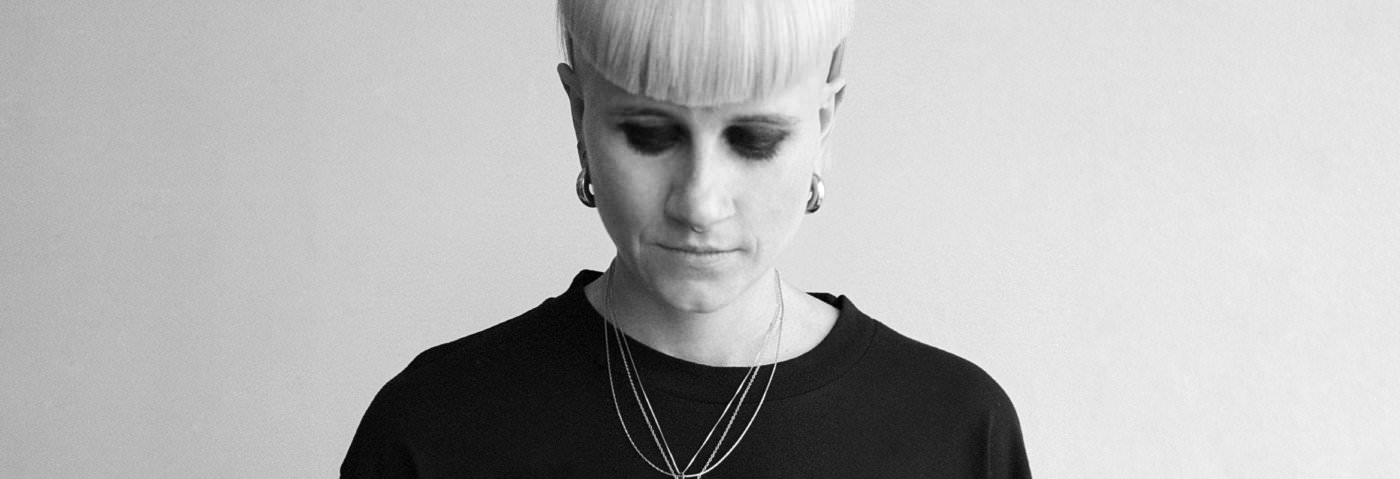Established Spanish DJ, producer and ‘Seeking The Velvet’ label founder Cora Novoa recently released her ‘The Hive’ EP on Vitalic. We got her to show us around her studio.
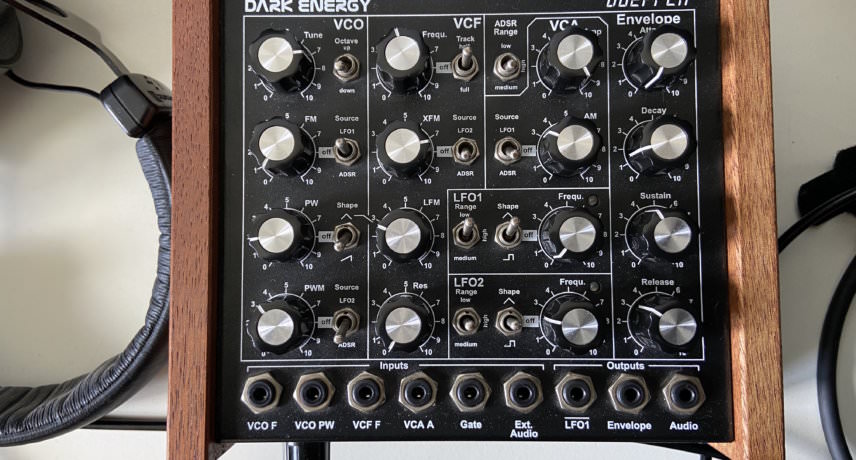
DOEPFER DARK ENERGY I
This was the first synthesizer I had which had the possibility of routing the signal the way modulars do (using CV, Gate). At first I had a hard time getting used to it, mainly because you find yourself with something more difficult to handle on a sound level, but with incredible analogical roughness. With it, I composed the bass and leads of’ ‘No Sex’ which featured the vocals of C.A.R. I also used it for the percussion intro heard in ‘Russian Bells’ (it’s the hi-hat/percussion at the beginning). If you have a cool sequence and dedicate time to the sound design of this synthesizer, you get excellent results.
Related
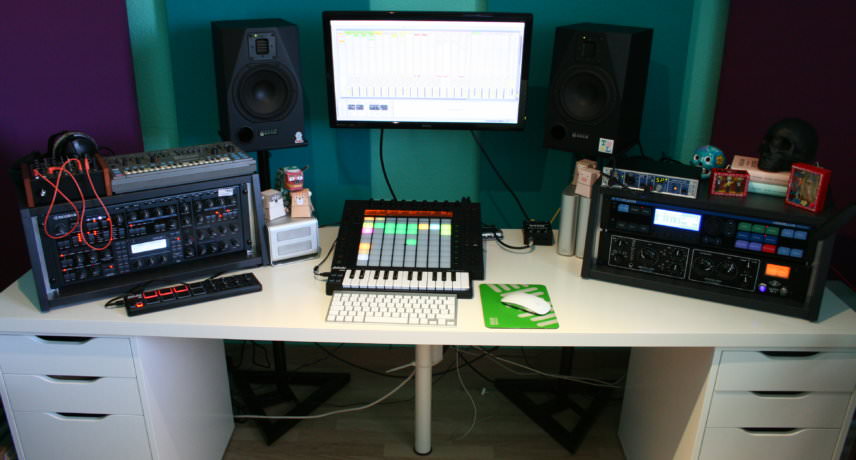


Main Studio
Today my studio configuration is a hybrid between digital and analog, with Ableton as the centre of operations. I have been working for 4 years on sound design, especially with the modular synthesiser and also with the Elektron – Analog Rytm. I record improvisation jams or I experiment with the sound routes until I find a sequence or a sound that I like and I record it. The fascinating thing about working with modulars is that the results are infinite and that leaving the synthesizer with the same parameters from one day to the next changes the sound, it’s incredible, hence the magic of the moment and the now, it’s like a kind of ‘sound meditation’.
Once I have everything recorded in audio in Ableton, I go on to shape everything, edit it, work the sounds with EQ and give it a space in the stereo field. I try not to force the dynamics so the sounds don’t lose their life.
The speakers I have are ADAM – P11A and my sound card is an RME – FIREFACE 400. It was the first thing I bought with my first salary, 14 years ago, and I am very happy with them. The speakers have a medium cone, perfect for a home studio. I’ve used them all my artistic career and they are my favourite speakers.
The sound card is one of the best purchases I’ve ever made. Many times the system goes down but my RME still works. It is a German beast; RME make high-quality products at a very fair price. I use it to work in the studio and also for all my live work. When I was doing my first live show at Sonar Festival Barcelona 2010 I used it, and the same for all my tours, club events and festivals: it is one of the jewels in my studio.
Related
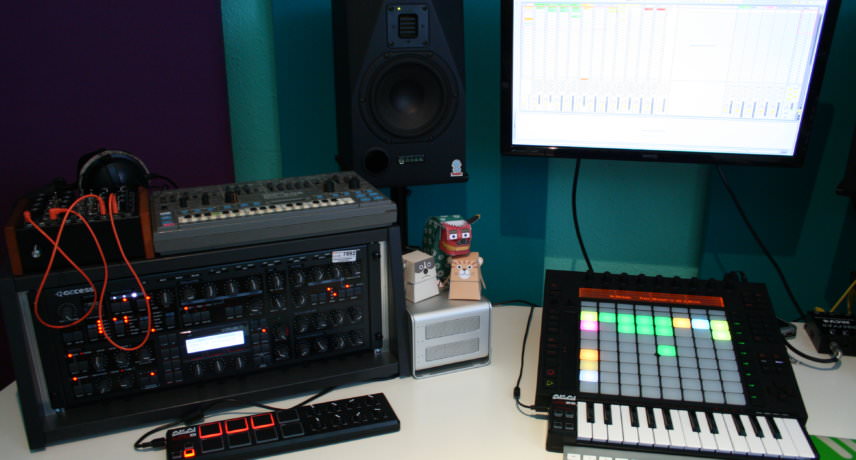


VIRUS TI + ROLAND MC202 + ABLETON PUSH
Currently, I am not using the VIRUS TI, but out of all my equipment, it was a faithful ally for all my initial discography. You can hear it in tracks like ‘Mercurio’, where the main lead comes from this synthesiser, also some drums from that project come from this synth too. I like the versatility it has and above all, if you’re getting into subtractive synthesis it’s a very recommendable machine.
The Roland MC202 was a purchase that I had a hard time getting; there aren’t many and it’s a hybrid between a 303 and an SH-101, it’s great to make acid and it has a classic sound. It’s hard to sequence it, but when you get a handle on it the result is amazing. The bass line of the track ‘In Your Mind‘ is from this synth. It’s the element that guides you around the track, that makes you go up and down, it becomes pure acid. I still remember that when I was playing with it, I got that sequence and thanks to the fact that I recorded several improvisations I was able to edit it and from there came this EP that we released on vinyl on my own record label Seeking The Velvet including a ‘Maelstrom’ remix. The problem is that once you turn it off you have lost the sequence: pure old analog.
Ableton Push is another element that I’m not using much right now, but I use it for my live act. I like to use it to launch sequences or to block the routing of certain devices when I’m improvising in the studio.
Related
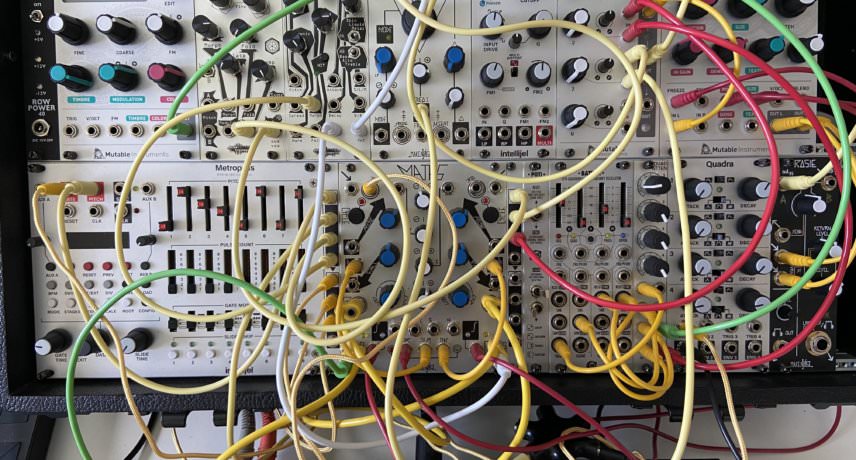


Modular Synth
Since I got to know the modular world, my conception of audio and synthesis has changed and right now it is the most fundamental part of my sound. At first, everything is new and you feel super lost, but if you work hard you will see the results. In all my current discography the modular synthesizer is present. For example in the whole trilogy of ‘Mental Diary‘ it’s present, in all the sound design, in the drones, in the leads, in the percussion… sometimes I don’t even know how I created the sounds. In the track ‘Breakdown’ all the kicks and the cut reverbs, I made them just with routing and I don’t have any idea how I did it. If I had to play it right now I wouldn’t know how as they all came from experimentation.
In my last release ‘The Hive’ the modular is very present as well. The LFOs are made with the Batumi module from XAOC, making simple routes but letting the reverb and delay work their magic. Also, the closed hit hats are made with the ‘Basimilus Iteritas Alter’ module from Noise Engineering.
The ‘Metropolis‘ module of ‘Intellijel’ is a super versatile sequencer that I use a lot for sequencing. Right now I am experimenting with the AUX inputs, breaking down the results with different input signals and experimenting with the catching of sequence recording functions.
The ‘Maths’ is another one of those fascinating and infinite modules that I could not classify. It’s an envelope but at the same time has LFOs, adds the signals and sends steps according to the rise or fall of the input signal. It’s super complete and infinite! It is my favourite envelope and I always use it in my routes to get random results with drones or synths.
At the moment I don’t want to buy any more modules, I want to get 100% out of everything I have and when I get to know it, I will incorporate things, but modular synthesis is infinite and currently, they are doing incredible things.
Related
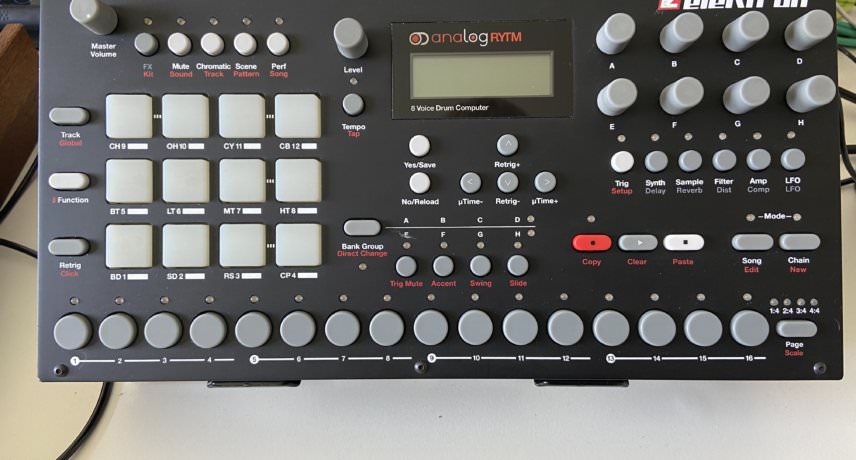


ELECTRON ANALOG RYTM
This Electron drum machine has become my basic machine to create all my percussion. This drum machine and the modular are essential in my current way of composing. You can also hear it in all the tracks of ‘Mental Diary’ and also in my latest EP ‘The Hive’. The initial idea is outlined with the drum machine and I try to shape the sounds until I can’t go any further. From there I record each sound in individual tracks inside Ableton, and I start equalizing and placing each sound inside the stereo image.
The bass drum and snare drum I make with layers, I usually put a bass drum and a low tom together, or several bass drums, and the same for the snares. This way you get to texture the percussion and make them very consistent. Less is more, so I prefer the snare drum to be blunt and rough and not get lost among the many elements rather than having three different snares and none of them sound good. You can hear this in the track ‘The Hive’, the bass drum and snare are created from the RYTM but once recorded I then shape it in Ableton using layers.
Related
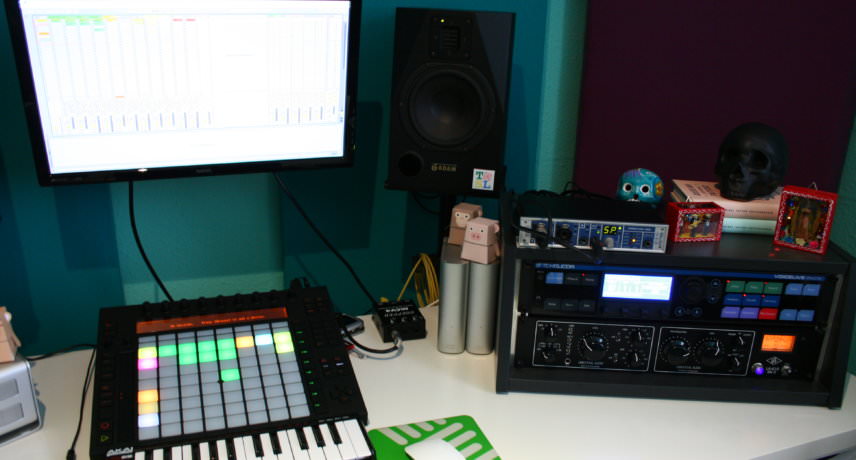


TC HELICON VOICE LIVE RACK + UA LA-610 MKII
I use the TC Helicon to experiment with vocals, it’s a module with infinite possibilities and FX. The results are very varied and you can hear it on my first album ‘The Secret Garden‘.
The UA LA-610 is the only thing that I have for dynamics and it’s a classic jewel. Whenever I want to use it I turn it on a little earlier so that its valve is warm and it leaves its analog colour. I have used it to record vocals and also percussions like shakers in the track ‘In Your Mind’. In the beginning, it was hard to get the point, but when you learn to use it the result is super elegant.
Related
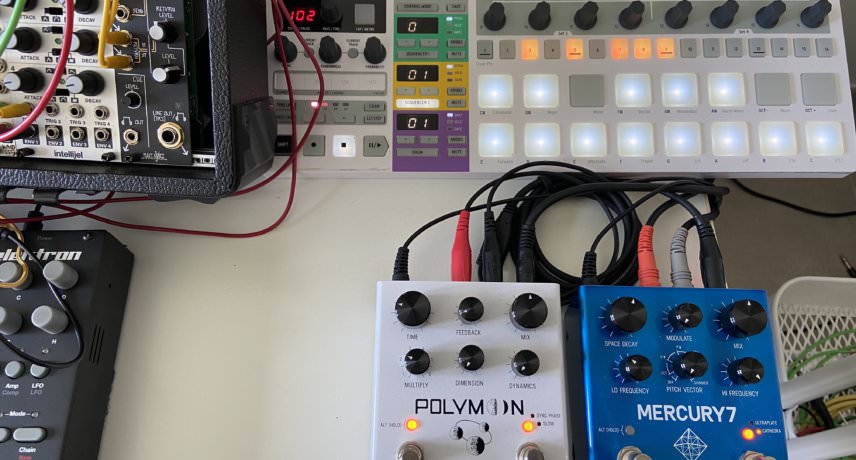


MERIS POLIMOON + MERIS MERCURY 7
The output of the modular synthesizer goes directly to the Meris Polimoon and from there to the Meris Mercury 7. It helps me to give the modular synthesizer body and space inside the stereo field, and from there to the input of the sound card. It’s the routing I use to record everything that comes out of the modular. They are very versatile, simple and with very good sound quality. I also use them when I play live and you can hear them in my last works: ACT 1 and ACT 2 from Mental Diary and also on ‘The Hive‘.
Related



DOEPFER DARK ENERGY I
This was the first synthesizer I had which had the possibility of routing the signal the way modulars do (using CV, Gate). At first I had a hard time getting used to it, mainly because you find yourself with something more difficult to handle on a sound level, but with incredible analogical roughness. With it, I composed the bass and leads of’ ‘No Sex’ which featured the vocals of C.A.R. I also used it for the percussion intro heard in ‘Russian Bells’ (it’s the hi-hat/percussion at the beginning). If you have a cool sequence and dedicate time to the sound design of this synthesizer, you get excellent results.
Related



Main Studio
Today my studio configuration is a hybrid between digital and analog, with Ableton as the centre of operations. I have been working for 4 years on sound design, especially with the modular synthesiser and also with the Elektron – Analog Rytm. I record improvisation jams or I experiment with the sound routes until I find a sequence or a sound that I like and I record it. The fascinating thing about working with modulars is that the results are infinite and that leaving the synthesizer with the same parameters from one day to the next changes the sound, it’s incredible, hence the magic of the moment and the now, it’s like a kind of ‘sound meditation’.
Once I have everything recorded in audio in Ableton, I go on to shape everything, edit it, work the sounds with EQ and give it a space in the stereo field. I try not to force the dynamics so the sounds don’t lose their life.
The speakers I have are ADAM – P11A and my sound card is an RME – FIREFACE 400. It was the first thing I bought with my first salary, 14 years ago, and I am very happy with them. The speakers have a medium cone, perfect for a home studio. I’ve used them all my artistic career and they are my favourite speakers.
The sound card is one of the best purchases I’ve ever made. Many times the system goes down but my RME still works. It is a German beast; RME make high-quality products at a very fair price. I use it to work in the studio and also for all my live work. When I was doing my first live show at Sonar Festival Barcelona 2010 I used it, and the same for all my tours, club events and festivals: it is one of the jewels in my studio.
Related
‘The Hive’ EP is available now.
Visit Cora Novoa’s website.
Related
17th July, 2020
